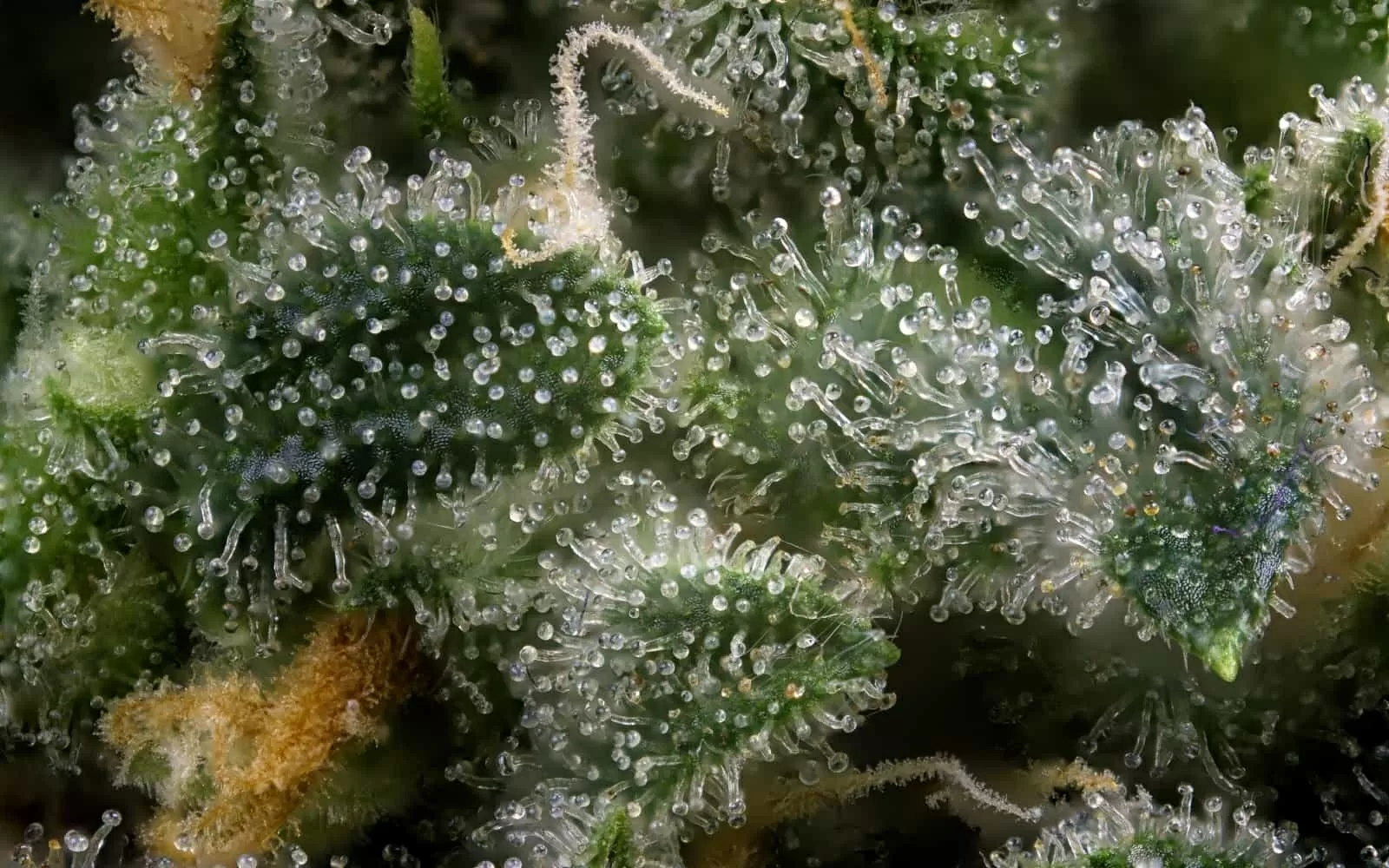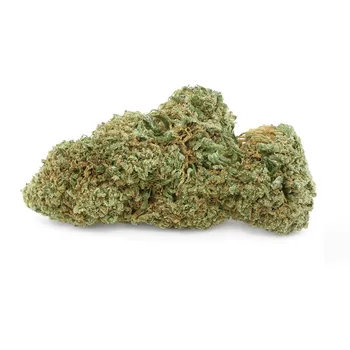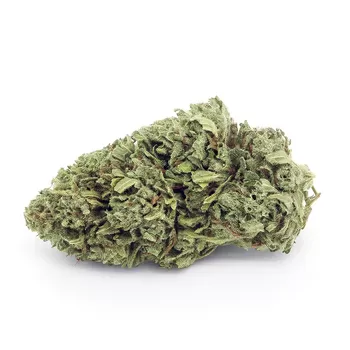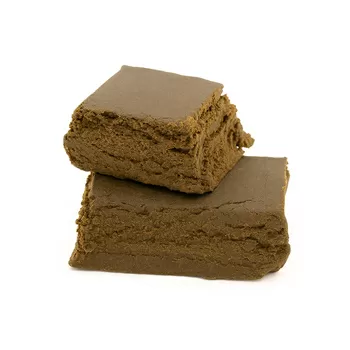The characteristic aroma of cannabis plants is made up of a complex balance of volatile substances chemically identified as terpenes, a class of molecules that, for cannabis alone, numbers over 120 different compounds.
These compounds, interacting synergistically with each other, help to identify the many different types of cannabis, distinguishing them by odour and quality. Produced in the trichomes, which are also responsible for THC production, terpenes are closely related to the genetics of the plant as well as the growing medium, climate and temperature.
In essence, the terpenes commonly found in many flowers and plants, such as lavender as well as cannabis, are nothing more than essential oils that determine the aroma of each species, defining its characteristic imprint and, although they do not contain cannabinoids, they are in fact able to act as modulators of the cannabinoid effect, thereby enhancing the effects of CBD and THC.
What are terpenes
Terpenes are a group of molecules found in nature, mainly in the plant kingdom, particularly in conifers and certain insect species. Their main distinguishing feature is their ability to give each botanical variety its characteristic aromatic level. An example is given by species such as mint, orange blossom, lavender as well as lemon grass, where an intense lemon aroma prevails.
If we look at the many varieties of marijuana plants that are commonly found in nature, the aroma or fragrance of each one is determined by the wide range of terpenes that are naturally produced by the plant itself, and in particular by the inflorescences.
Chemically, terpenes are groups of molecules originating within the trichomes, the same glands found in the inflorescences, which are responsible for the production of THC.
However, each distinct aroma is determined by different factors, which may be genetic, environmental, climatic or simply dictated by the composition of the soil. It is precisely the single molecular structure that distinguishes the terpenes into 7 different classes depending on the genetics of the plant: specifically, the hemiterpenes, monoterpenes, sesquiterpenes, diterpenes, sesterpenes, triterpenes and polyterpenes, all characterised by a typical structure created on the basis of an isoprene chemical unit that tends to repeat itself regularly throughout the molecule.
However, the terpenes contained in cannabis belong mainly to the classes of sesquiterpenes and monoterpenes. Monoterpenes are small and volatile, tangible the moment you hold a cannabis bud between your fingers and perceive its characteristic aroma.
The sesquiterpenes, on the other hand, are heavy, large and therefore less volatile, and can be appreciated the moment the weed is vaporized or smoked.
As is often the case in nature, it is curious to think that terpenes are used by plants as a form of self-defence against predators. By emitting a characteristic pungent and persistent aroma, they can repel certain pests and insects, but on the contrary they can attract the beneficial species needed for pollination.
However, in addition to being responsible for secreting the typical fragrances that characterise each botanical species as well as the many varieties of marijuana, terpenes have the ability to promote and modify the psychoactive effects generated by THC.
Numerous studies have defined the correlation between the terpenes of cannabis plants and the effects they are able to induce, together with the therapeutic properties that may favour different actions depending on their combination and overlapping, since the different species of cannabis have diametrically different types and quantities of terpenes. Suffice it to say that cannabis sativa can have as many as 120 different terpene types.
These chemical compounds therefore contribute to the important functions of the cannabis plant, providing the basis for more complex molecules that are essential for its proper metabolic balance, such as stimulating hormones, vitamins, pigments, steroids, resins and even cannabinoids, as well as providing a defensive barrier against parasites, insects and fungi, given their characteristic pungent odour.
In the inflorescences, monoterpenes such as limonene and α-pinene tend to predominate, with their strong anti-parasitic and anti-fungal properties, while the leaves are dominated by sesquiterpenes, which help to make them less attractive to herbivorous animals, due to their particularly bitter and unpleasant taste.
Terpenoids, on the other hand, are a 'subclass' of terpenes with more complex functional groups. They have a number of therapeutic and health-promoting biological properties for humans because they work in perfect synergy with cannabinoids, thus producing particularly beneficial health effects.
They are believed to promote blood flow, improve brain function, easily eradicate pathogens that usually affect the respiratory system, and are effective in treating pain, inflammation and bacterial and fungal infections. Generally speaking, therefore, terpenes are considered responsible for reducing any anxiolytic effects induced by THC, highlighting all the possible limitations and risks posed by synthetic drugs made up of isolated active ingredients.
Finally, the heterogeneity of terpene composition within cannabis is a valid parameter for defining in detail the different biotypes of the species. An example is given by the Indica strain, where β-myrcene, α-pinene and limonene predominate, compared to the Sativa strain, which on the contrary has a considerably more complex and varied terpene profile.
Cannabis terpenes
There are seven most common terpenes present in cannabis, each contributing to different effects of cannabis and actions.
Mircene
Myrcene is the most frequently occurring terpene in marijuana, responsible for the formation of what are usually the characteristic aromatic oils in cannabis varieties. Also present in hops, it has an aroma often compared to that of cloves. It is particularly noted for its anti-inflammatory, anti-bacterial, pain-relieving and analgesic properties, for its sedative, calming and relaxing effects, and for significantly enhancing the psychoactive effects of THC.
Limonene
Limonene, preceded only by myrcene, is the second most common terpene found in marijuana, especially in the Haze variety, and is distinguished by the characteristic citrus scent from which it gets its name.
It has strong antifungal and anti-bacterial properties, although several studies have long been monitoring its potential anti-carcinogenic power, which would help prevent the formation and progression of specific forms of brain tumours, as it can easily penetrate the blood-brain barrier. It also aids concentration and attention, as well as promoting general wellbeing.
According to non-scientific sources, it is also indicated for solving sexual problems. There are many products that use limonene as an important active ingredient: from preparations against anxiety and depression to cosmetics and natural insect repellents, to name but a few.
Linalolo
Linalool has a strong resemblance to the typical smell of fresh flowers: it is very similar to lavender with a slight spicy touch. It has a sedative and calming effect and is widely used to treat anxiety and to control anger and nervousness. Linalool is also attributed with analgesic and anti-epileptic properties as well as calming and sedative effects typical of some cannabis strains.
Beta-cariofillene
Beta-caryophyllene determines the characteristic spicy taste of spices such as black pepper. It is distinguished by its strong anti-inflammatory action and as a local analgesic, as well as being an antifungal: found particularly in cloves, it has a reputation as a 'natural painkiller'.
Pinene
Pinene is responsible for the characteristic scent of conifers, although it also appears in many herbs such as sage and rosemary. It has local anti-inflammatory and antiseptic properties and is also useful as an expectorant, helping to dilate the bronchi. It also improves concentration and boosts energy. Among the cannabis strains with a high amount of pinene are various Skunk strains.
Terpineolo
Terpineol is the typical scent of linden and lilac flowers. Often used in cosmetics and perfumes, it has a strong sedative and relaxing effect. It is also interesting to note that cannabis strains with high levels of terpineol often also contain significant amounts of pinene, which makes it difficult to detect the presence of terpineol simply by smell.
Nerolidolo
Nerolidol is found particularly in ginger, lemongrass and niaouli. It is widely used as a flavouring agent and in perfumery, due to its typically woody scent reminiscent of bark. Therapeutically, it is thought to be an effective antifungal, and is also useful in the treatment of malaria. It also has a significant sedative and relaxing effect.
Borneolo
Borneol, found particularly in rosemary, characterises a fresh aroma reminiscent of mint and camphor. Traditionally used in Chinese medicine to treat stress and fatigue, it is a natural local anaesthetic with sedative and antispasmodic properties. It is also an effective natural insect repellent.
Eucaliptolo
Eucalyptol is the terpene found in eucalyptus essential oil and is distinguished by its strong minty fragrance. It is believed to have pain-relieving properties as well as the ability to aid concentration, which is why it is particularly common in plants typically used in meditation.
How to use and to dilute terpenes

Terpenes can be used in different ways and in different doses, preferably in their pure form: they are widely used when added to food and drink, as a flavouring using 2 drops per food. Alternatively, they can also be diluted in alcohol, olive oil or coconut oil for example, at the rate of 3-5 drops per 100ml of liquid.
Typically, each drop contains around 50mg of terpene, and as this is a pure concentrate, it needs to be handled with care to avoid irritation to the skin or mucous membranes.
They can also be diluted with propylene glycol and vegetable glycerine, the main components of electronic cigarette e-liquids, mixing perfectly with these elements, simply through stirring and slight heat.
The more 'daring' take advantage of terpenes by applying a small amount directly to the cannabis inflorescence which has lost its characteristic aroma over time, to promote the effects by increasing the aroma, either by combustion or vaporisation, which can also be done through the use and dilution of electronic cigarette liquids. The same concept can of course be applied to CBD crystals, as well as cannabis oils.
It is important to remember that as a rule, a concentration of 3 to 4% in relation to the amount of liquid used for dilution is adequate. However, it may vary depending on the mixture of terpenes used and the desired effects. It is essential to always follow the recommendations on the packaging.
When associated with cannabis, regardless of whether we are dealing with inflorescences or crystals or oils, terpenes tend to define the so-called 'entourage effect', which perfectly describes their association with cannabinoids, the dominant elements in cannabis. This term indicates an increase in the efficacy of the weed and a significant improvement in its therapeutic effects, derived precisely from the terpene-cannabinoid association. This complementary action can therefore significantly enhance the therapeutic level of the preparations and obviously broaden their field of use.
Different terpenes can also be combined in such a way as to treat a variety of problems simultaneously: linalool and myrcene when taken in synergy offer a marked sedative and calming action, which is also useful in treating conditions that cause convulsions, and is made even more effective when terpinolene, for example, is added.
If, on the other hand, it is necessary to promote energy and vitality, while at the same time enhancing concentration and brain performance, limonene and pinene are the most suitable solutions. The latter, however, due to its strong anti-inflammatory action, can be taken in conjunction with beta-caryophyllene, while limonene itself is often effective in treating gastrointestinal problems and symptoms.
 Italiano
Italiano Español
Español English
English Français
Français Deutsch
Deutsch



